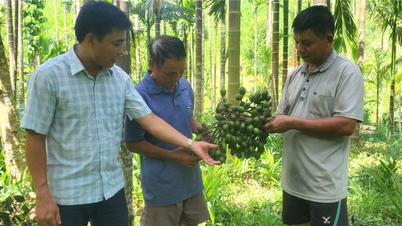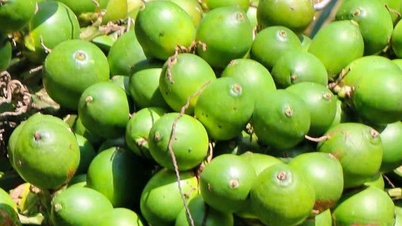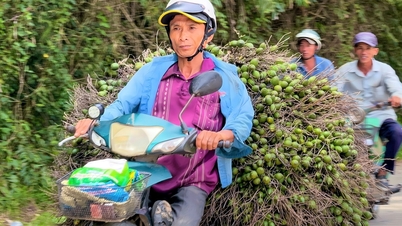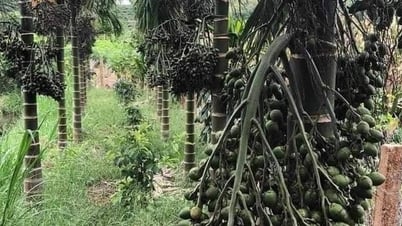
Cultivating betel nut trees provides a stable income, so many farmers in the province have renovated and restored their betel nut gardens to increase their income and contribute to beautifying the countryside.
These are the words of Mr. Hoang Van Viet from Zone 4, Xuan Huy Commune, Lam Thao District, when speaking about the tree that embodies the soul of his birthplace and the place where he lives. Mr. Viet recounts that, in the past, betel nut trees were considered a special indicator of each family in the village. Just by looking at the row of betel nut trees in front of a house, a stranger could tell how many members a family had. Take Mr. Viet's family, for example. After having four children, his father went to the market and bought six small betel nut trees to plant in front of the house. Although planted at the same time, on the same plot of land, over time, the six trees grew to different sizes. The first two trees, representing the father and mother, were the tallest, while the remaining four were smaller and shorter, like the four siblings in the family. The villagers believed that the betel nut tree symbolized resilience, togetherness, and prosperity. A family whose betel nut trees thrived and lived long was considered fortunate. If any tree was diseased, withered, or fell, it was considered a bad omen, and another tree had to be planted in its place...
As a locality that still preserves the beauty of betel nut trees adorning the countryside, betel nut trees can be seen everywhere along the village roads and alleys in Lam Thao district, with tall rows of betel nut trees visible. The types of betel nut trees chosen by the people here are mainly dwarf betel nut trees and white betel nut trees. Dwarf betel nut trees are often planted as ornamental plants in gardens, with an average height, a slightly swollen trunk, and many exposed roots. White betel nut trees have a tall, round trunk, white flowers, and especially eye-catching red fruit when ripe. The trees can reach a height of 10 meters, with a uniformly round trunk and closely spaced nodes, and are often planted in schoolyards, cultural centers, etc.
In recent years, besides serving the spiritual needs and betel chewing habits of many people, betel nuts have also been in high demand due to export to the Chinese market. Currently, each bunch of betel nuts (100 nuts) sells for between 200,000 and 300,000 VND. With stable income from betel nuts, many farmers have begun to renovate and restore their betel nut gardens to create additional income, while also contributing to the beautification of the countryside with rows of straight betel nut trees along new rural roads.

A corner of a row of betel nut trees in Cao Xa commune, Lam Thao district.
Having been involved in the "eating on the ground, working in the sky" profession for many years, every late summer, Mr. Nguyen Van Dung from Cam Khe district is busy traveling back and forth across Lam Thao, Thanh Ba, and Ha Hoa districts – areas with many betel nut trees in the province – to buy betel nuts. Mr. Dung shared: "The betel nut season starts from July to December. The betel nuts to be purchased must meet certain criteria: the fruits must be round, intact, and glossy green, with no missing tips... With an average selling price of 60,000-70,000 VND/kg, some bunches with abundant fruit can bring in millions of dong..."
Along with bamboo groves, banyan trees, and riverside docks, the betel nut tree is one of the beloved images that deeply imprints the essence of the countryside. The cultural beauty of planting betel nuts in home gardens or the presence of betel nuts in rituals and important life events is a way for people to cherish, preserve, and continue their connection with the betel nut, creating positive economic and spiritual values for generations to come.
Coeval
Source: https://baophutho.vn/luu-giu-net-dep-lang-que-213338.htm










































































































Comment (0)